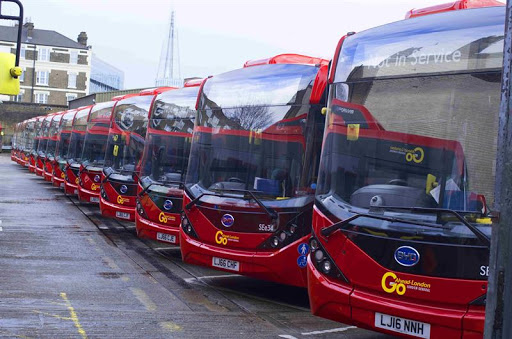The Go-Ahead bus garage in North London is set to become the world’s largest vehicle-to-grid (V2G) site, generating electricity from electric buses when not in use.
The initial trial will use the batteries of 28 state-of-the-art double decker buses, capable of returning over 1 MW energy to the grid.
V2G technology helps manage the peaks and troughs of electricity demand, as well as store excess energy generated by renewables that otherwise cannot be stored.
The Bus2Grid project will be led by SSE Enterprise in partnership with the Mayor of London, Transport for London (TfL) and Go-Ahead London.
Although only a trial for the time being, the project will explore both the commercial and social benefits to the energy and passenger transportation systems by developing services for the national grid, regional distribution network operators, bus operators and transport authorities.
The development and test of the underpinning technology is also an important objective of the trial.
While V2G projects have a lot of potential within future carbon-free electricity grids, they come with caveats that need to be explored. Firstly, the lithium-ion batteries found inside electric vehicles have a limited number of charge cycles, so will wear out faster than electric vehicles not connected to such a system. There are also issues to do with timing: for example, if the electricity from a bus battery has been returned to the grid when it needs to be out on the road doing its rounds.
Niall Riddell from SSE Enterprise said: “Central to the challenge of decarbonising our transport and achieving climate change targets is how we can optimise the existing flexibility within the energy system. Developing a charging infrastructure that operates in two directions so that batteries can give back as well as take from the grid is an important part of this.
“SSE Enterprise is proud to have electrified most of the bus garages in London that operate electric buses. Delivering the Bus2Grid project is the next natural step in using smart technology to make bidirectional charging the reality for today’s bus users.”
Go Ahead London was chosen by TfL to run the first electric buses in London back in 2013. It has now grown its fleet to 240, making it the largest e-bus operator in Britain.
Dr Stephen Hall from the University of Leeds, one of the project partners, said: “Electrifying transport will have huge benefits for air quality in cities and for meeting our climate change commitments.
“Large electric vehicles like these can also support the energy system, but this means creating new ways of working between energy utilities, grid managers and transport providers. This project is creating new business models to make this happen.”
UK Power Networks forecasts there will be more than 3.6m electric vehicles connected to its network by 2030, an increase of more than 3.5m on the 95,000 vehicles currently in its region, creating significant additional demand on the energy system.
The options are either to spend customers’ money on building new infrastructure to meet this increasing demand or to charge in a smarter way to avoid it.
Ian Cameron, Head of Innovation at UK Power Networks, said: “We believe buses have a big part to play in rolling out low-emission vehicles. They offer huge opportunities to contribute towards the drive to improve London’s air quality.
“A fleet of bus batteries harnesses large amounts of electricity and they are habitual, with regular and predictable routes, driving patterns and timings. That means we can easily predict and plan for how we can use any spare electrical capacity they can offer.
“For example, we could use them as energy storage devices that could add capacity and help us to increase the volume of renewable energy exported onto the network when supply might otherwise be exceeding demand.”

